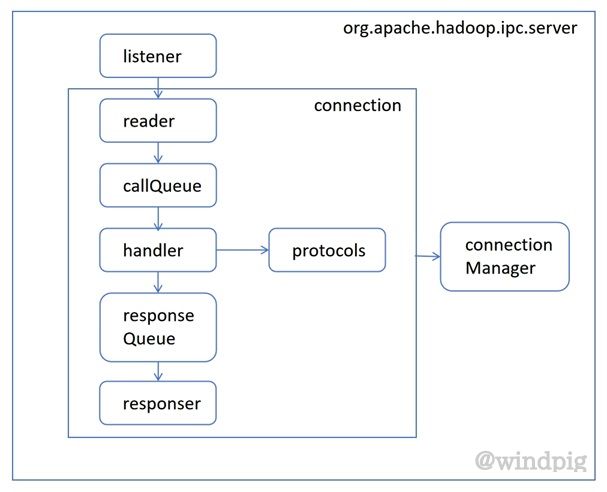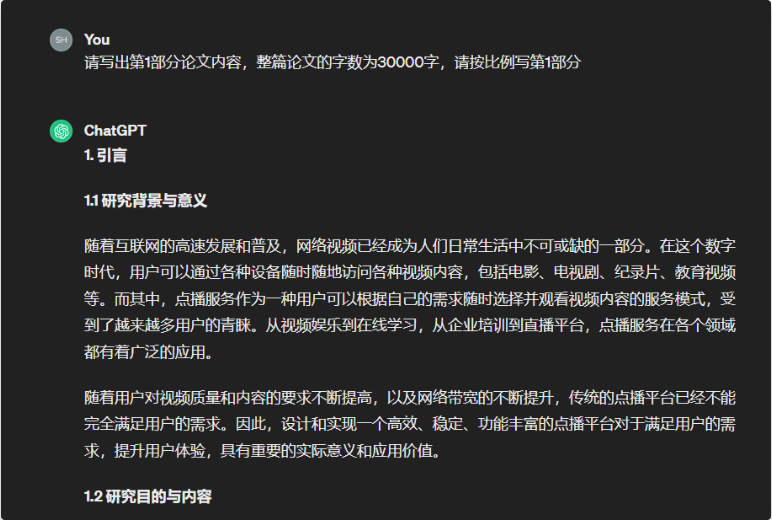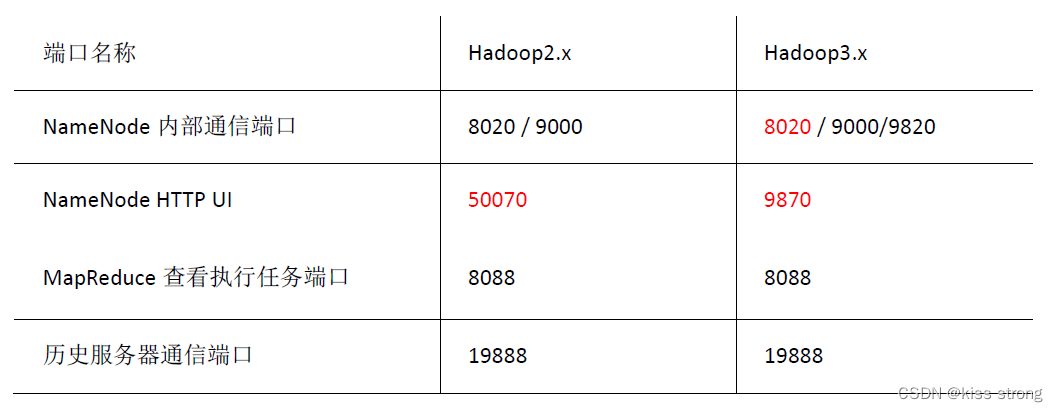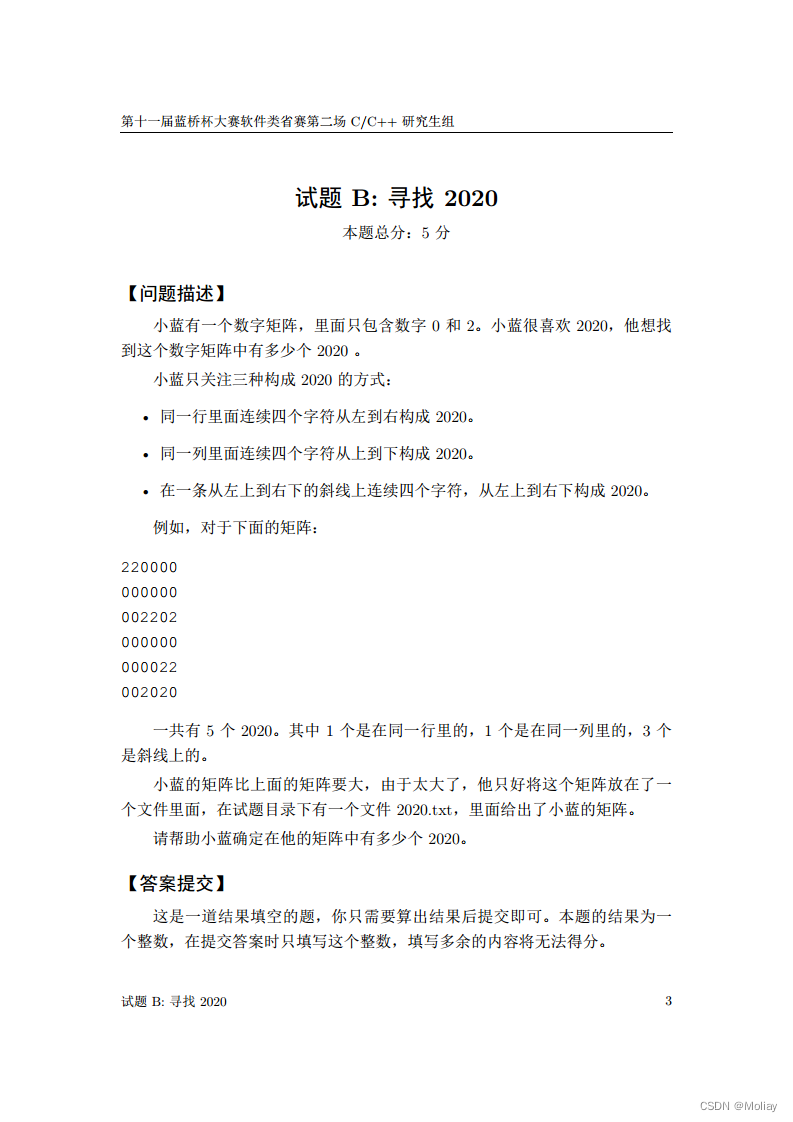本文将介绍如何使用哈希表来实现C++ STL库中的unordered_map和unordered_set容器。我们将会解释哈希表的基本原理,并给出具体的代码示例,帮助读者更好地理解和应用哈希表。
哈希原理讲解–链接入口
set和map的实现的文章,与unordered_map实现类似
对HashTable的改造
#pragma once
template<class K>
struct Hashfunc
{
size_t operator()(const K& key)
{
return (size_t)key;
}
};
//特化
template<>
struct Hashfunc<string>
{
size_t operator()(const string& s)
{
size_t hash = 0;
for (auto a : s)
{
hash += a;
hash *= 31;
}
return hash;
}
};
namespace hash_bucket
{
template <class T>
struct HashNode
{
HashNode<T>* _next;
T _data;
HashNode(const T& data)
:_next(nullptr),
_data(data)
{}
};
// 前置声明
template<class K, class T, class KeyOfT, class Hash>
class HashTable;
template<class K, class T, class KeyOfT, class Hash>
struct _HTIterator
{
typedef HashNode<T> Node;
typedef HashTable<K, T, KeyOfT, Hash> HT;
typedef _HTIterator<K, T, KeyOfT, Hash> Self;
Node* _node;
HT* _ht;
_HTIterator(Node* node,HT* ht)
:_node(node),
_ht(ht)
{}
T& operator*()
{
return _node->_data;
}
T* operator->()
{
return &_node->_data;
}
Self& operator++()
{
if (_node->_next)
{
_node = _node->_next;
}
else
{
KeyOfT kot;
Hash hs;
size_t hashi = hs(kot(_node->_data)) % _ht->_tables.size();
hashi++;
//循环找出存在的哈希桶位置;
while (hashi < _ht->_tables.size())
{
if (_ht->_tables[hashi])
{
_node = _ht->_tables[hashi];
break;
}
hashi++;
}
if (hashi == _ht->_tables.size())
{
_node = nullptr;
}
return *this;
}
}
bool operator!=(const Self & s)
{
return _node != s._node;
}
bool operator ==(const Self& s)
{
return _node == s._node;
}
};
template<class K,class T,class KeyOfT, class Hash>
class HashTable
{
template<class K,class T,class KeyOfT,class Hash>
friend struct _HTIterator;
typedef HashNode<T> Node;
public:
typedef _HTIterator<K, T, KeyOfT, Hash> iterator;
iterator begin()
{
for (size_t i = 0; i < _tables.size(); i++)
{
// 找到第一个桶的第一个节点
if (_tables[i])
{
return iterator(_tables[i], this);
}
}
return end();
}
iterator end()
{
return iterator(nullptr, this);
}
HashTable()
{
_tables.resize(10, nullptr);
_n = 0;
}
~HashTable()
{
for (size_t i= 0; i < _tables.size(); i++)
{
Node* cur = _tables[i];
while (cur)
{
Node* next = cur->_next;
delete cur;
cur = next;
}
_tables[i] = nullptr;
}
}
iterator Find(const K& key)
{
KeyOfT kot;
Hash hs;
size_t hashi = hs(key) % _tables.size();
Node* cur = _tables[hashi];
while (cur)
{
if (kot(cur->_data) == key)
{
return iterator(cur,this);
}
cur=cur->_next;
}
return iterator(nullptr,this);
}
pair<iterator,bool> Insert(const T& data)
{
KeyOfT kot;
Hash hs;
//查找是否有相同元素
iterator it = Find(kot(data));
if (it != end())
return make_pair(it,false);
//扩容
if (_n == _tables.size())
{
vector<Node*> newTables(_tables.size() * 2, nullptr);
for (size_t i = 0; i < _tables.size(); i++)
{
Node* cur = _tables[i];
while (cur)
{
Node* next = cur->_next;
size_t hashi = hs(kot(cur->_data)) % newTables.size();
cur->_next = newTables[hashi];
newTables[hashi] = cur;
cur = next;
}
_tables[i] = nullptr;
}
_tables.swap(newTables);
}
size_t hashi = hs(kot(data)) % _tables.size();
Node* newnode = new Node(data);
it = iterator(newnode, this);
newnode->_next = _tables[hashi];
_tables[hashi] = newnode;
++_n;
return make_pair(it,true);
}
bool Erase(const K& key)
{
KeyOfT kot;
Hash hs;
size_t hashi = hs(key) % _tables.size();
Node* prev = nullptr;
Node* cur = _tables[hashi];
while (cur)
{
if (kot(cur->_data)==key)
{
if (prev)
{
prev->_next = cur->_next;
}
else
{
_tables[hashi] = cur->_next;
}
delete cur;
_n--;
return true;
}
prev = cur;
cur = cur->_next;
}
return false;
}
private:
vector<Node*> _tables;
size_t _n;
};
}
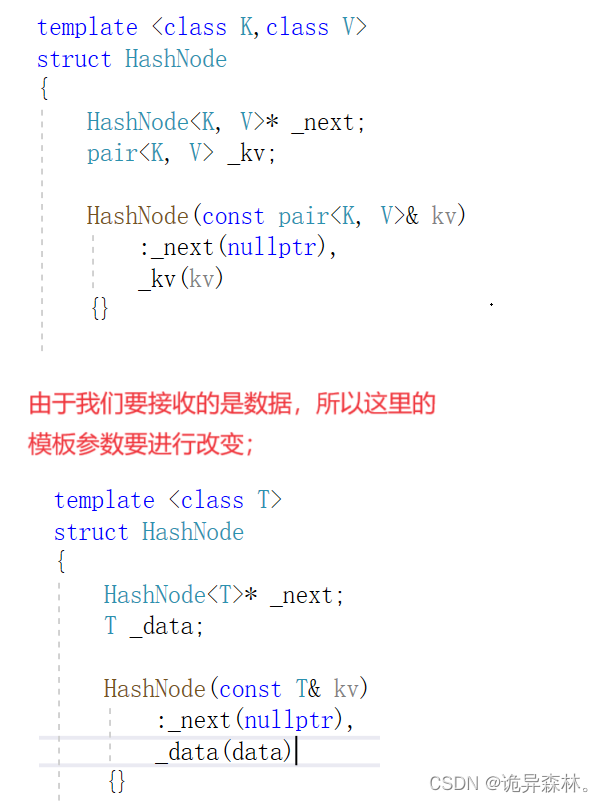
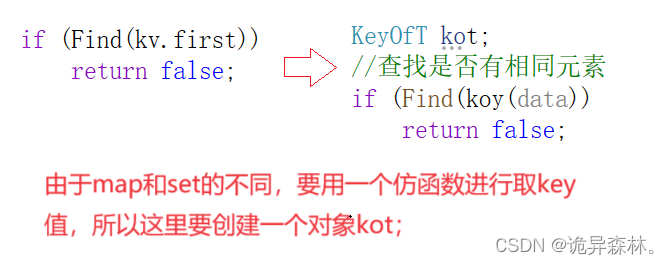
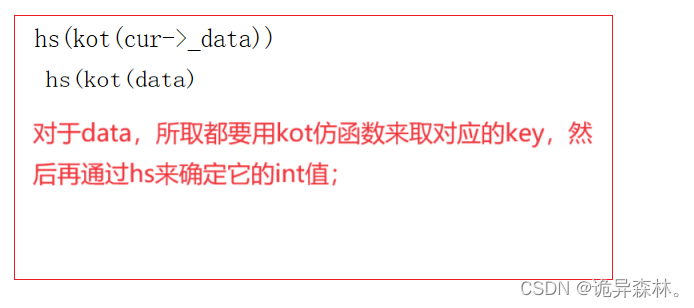

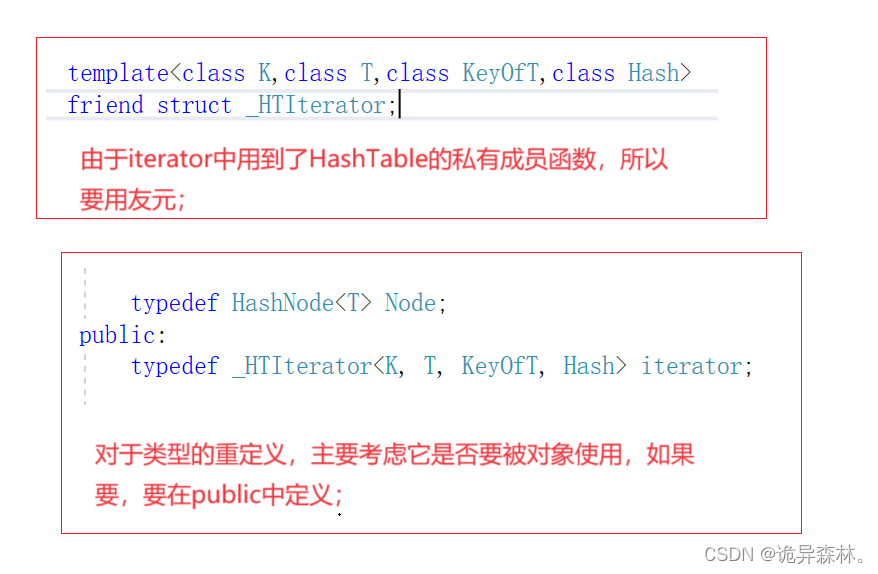
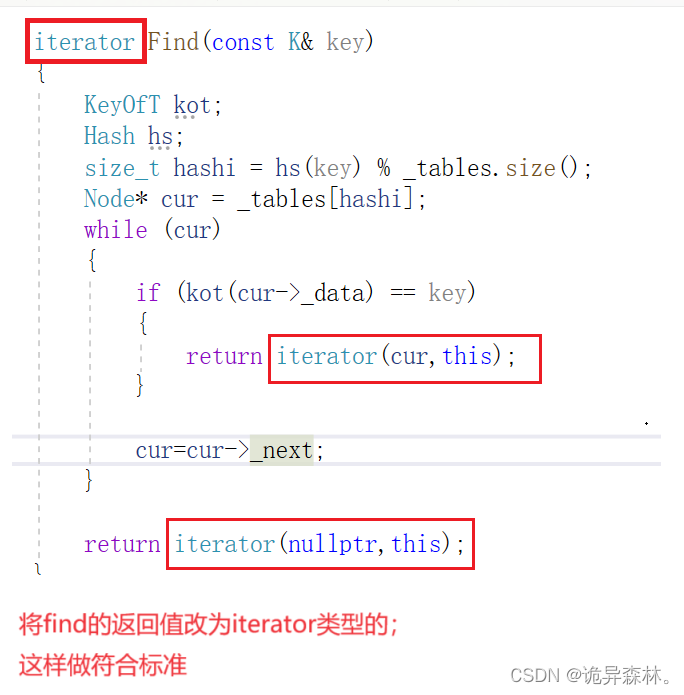
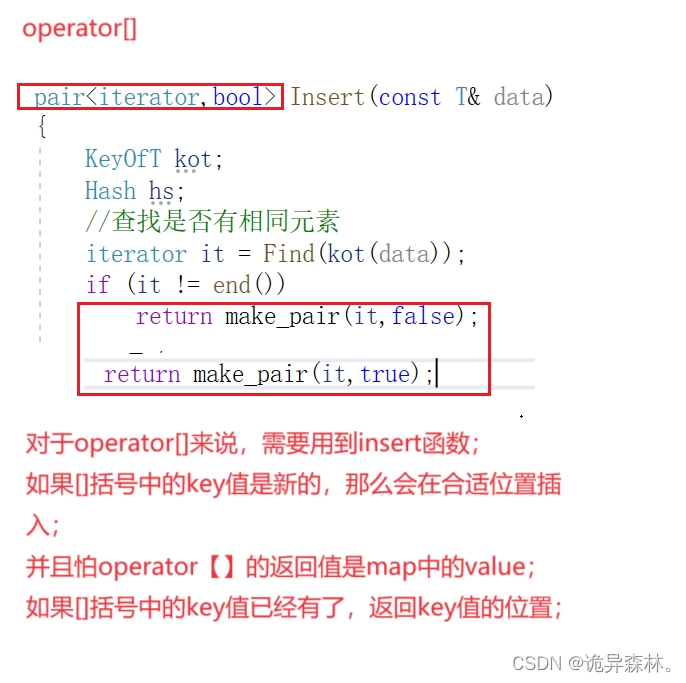
对unordered_map和unordered_set的实现
unordered_set是一种集合存储的容器,它存储唯一的元素。我们同样可以使用哈希表来实现unordered_set,将元素映射到数组的索引。
- 插入操作:通过哈希函数计算元素的索引,如果索引位置为空,则直接插入;否则,使用开放地址法寻找下一个可用的槽进行插入。
- 查找操作:通过哈希函数计算元素的索引,然后比较该索引位置的元素是否与目标元素相等,如相等则返回存在;如不相等,则使用开放地址法依次查找下一个槽,直到找到相等的元素或者遇到空槽为止。
- 删除操作:通过哈希函数计算元素的索引,然后通过循环找到对应的元素,如果这个元素有前一个结点,那么就让前一个结点链上当前结点的下一个结点,然后删除当前结点;如果当前元素没有前一个结点,那么就表示删除该节点后,哈希桶的头结点将为空;
namespace fnc
{
template<class K,class Hash=Hashfunc<K>>
class unordered_set
{
struct SetKeyOfT
{
const K& operator()(const K& key)
{
return key;
}
};
public:
typedef typename hash_bucket::HashTable<K, const K, SetKeyOfT, Hash>::iterator iterator;
iterator begin()
{
return _ht.begin();
}
iterator end()
{
return _ht.end();
}
pair<iterator,bool> insert(const K& k)
{
return _ht.Insert(k);
}
iterator find(const K& k)
{
return _ht.Find(k);
}
bool Erase(const K& k)
{
return _ht.Erase(k);
}
private:
hash_bucket::HashTable<K, const K, SetKeyOfT, Hash> _ht;
};
}
unordered_map是一种键值对存储的容器,它允许通过键快速查找对应的值。我们可以使用哈希表来实现unordered_map,将键映射到数组的索引,值存储在对应的槽中。
- 插入操作:通过哈希函数计算键的索引,如果索引位置为空,则直接插入;否则,使用开放地址法寻找下一个可用的槽进行插入。
- 查找操作:通过哈希函数计算键的索引,然后比较该索引位置的键是否与目标键相等,如相等则返回对应的值;如不相等,则使用开放地址法依次查找下一个槽,直到找到相等的键或者遇到空槽为止。
- 删除操作:通过哈希函数计算元素的索引,然后通过循环找到对应的元素,如果这个元素有前一个结点,那么就让前一个结点链上当前结点的下一个结点,然后删除当前结点;如果当前元素没有前一个结点,那么就表示删除该节点后,哈希桶的头结点将为空;
namespace fnc
{
template<class K, class V, class Hash = Hashfunc<K>>
class unordered_map
{
struct MapKeyOfT
{
const K& operator()(const pair<K, V>& kv)
{
return kv.first;
}
};
public:
typedef typename hash_bucket::HashTable<K, pair<const K, V>, MapKeyOfT, Hash>::iterator iterator;
iterator begin()
{
return _ht.begin();
}
iterator end()
{
return _ht.end();
}
pair<iterator,bool> insert(const pair<K, V>& kv)
{
return _ht.Insert(kv);
}
iterator find(const K& k)
{
return _ht.Find(k);
}
bool Erase(const K& k)
{
return _ht.Erase(k);
}
V& operator[](const K& key)
{
pair<iterator, bool> ret = insert(make_pair(key, V()));
return ret.first->second;
}
private:
hash_bucket::HashTable<K, pair<const K, V>, MapKeyOfT, Hash> _ht;
};
}
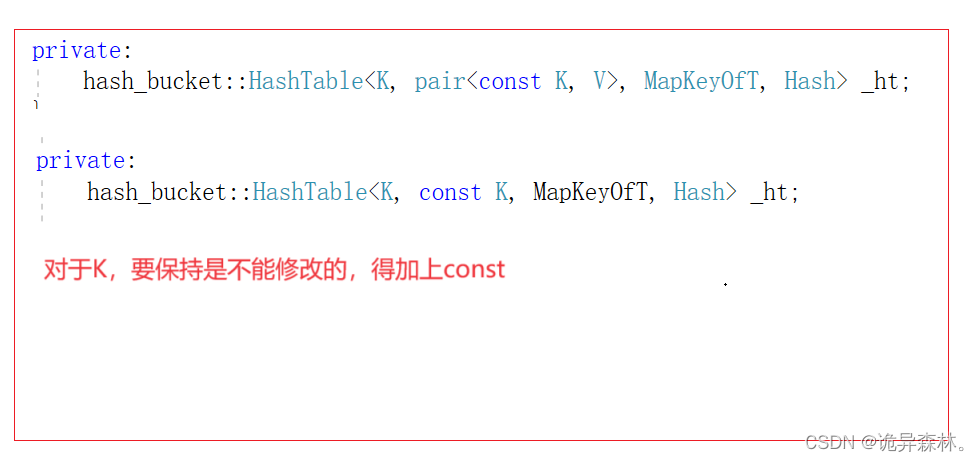
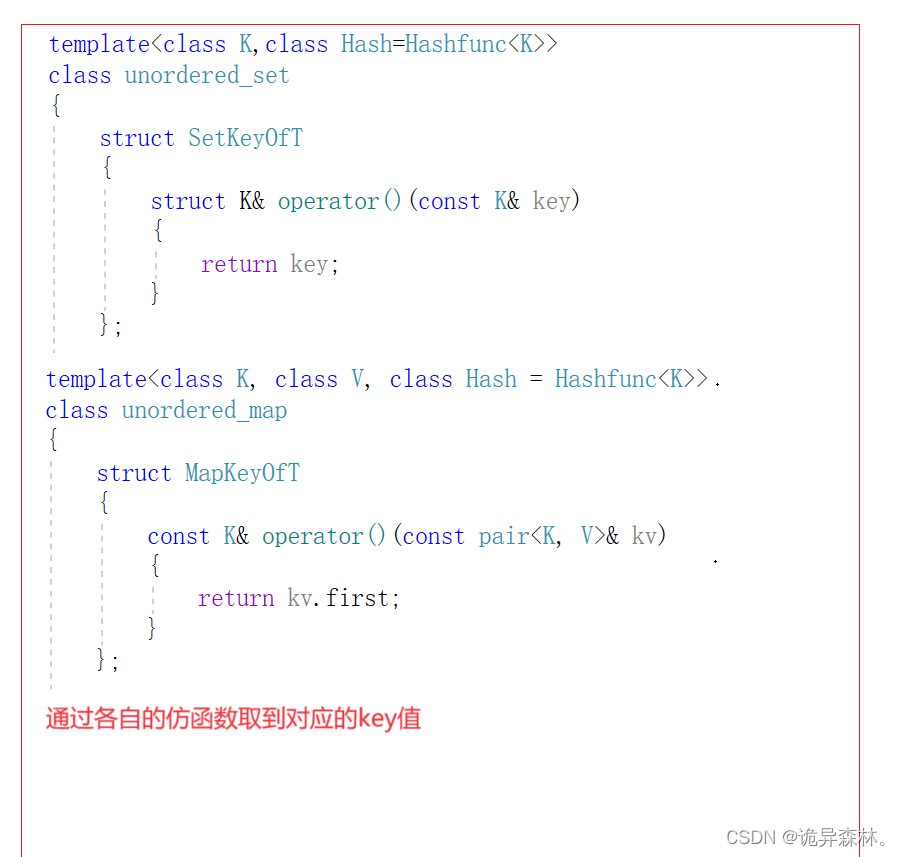

测试
insert
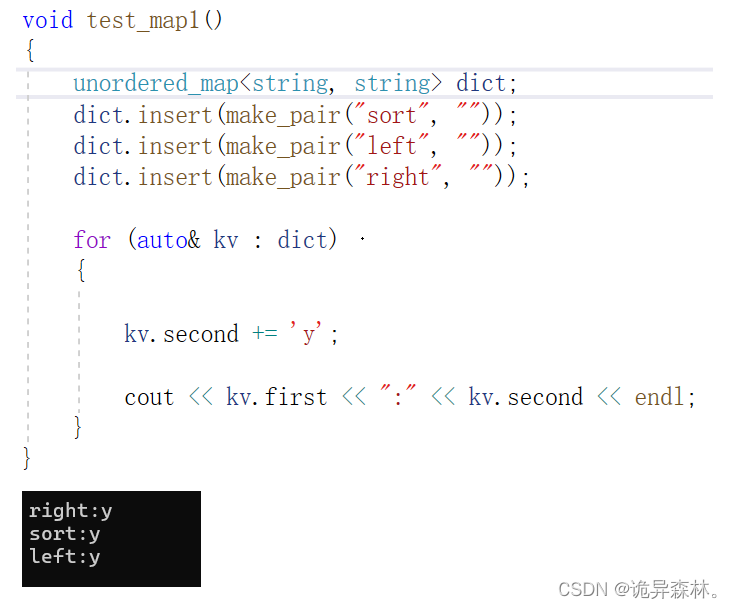
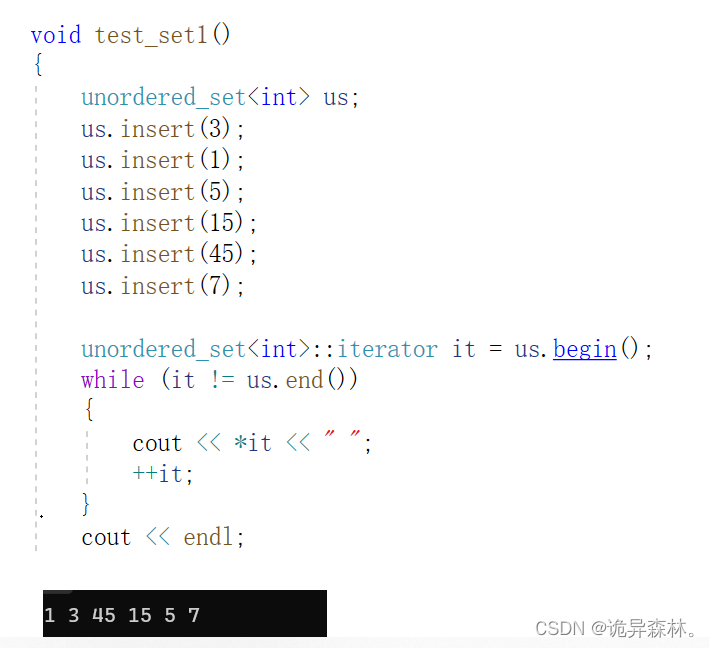
find和erase
//find和erase
void test_set2()
{
vector<int> v = { 3,1,5,15,45,7 };
unordered_set<int> us;
us.insert(3);
us.insert(1);
us.insert(5);
us.insert(15);
us.insert(45);
us.insert(7);
unordered_set<int>::iterator it = us.begin();
while (it != us.end())
{
cout << *it << " ";
++it;
}
cout << endl;
if (us.find(15) != us.end())
{
cout << "15:在" << endl;
}
else
{
cout << "15:不在" << endl;
}
if (us.find(16) != us.end())
{
cout << "16:在" << endl;
}
else
{
cout<<"16:不在" << endl;
}
cout << endl;
us.Erase(5);
us.Erase(7);
it = us.begin();
while (it != us.end())
{
cout << *it << " ";
++it;
}
cout << endl;
}
}
void test_map2()
{
unordered_map<string, string> dict;
dict.insert(make_pair("sort", "排序"));
dict.insert(make_pair("left", "左"));
dict.insert(make_pair("right", "右"));
for (auto& kv : dict)
{
cout << kv.first << ":" << kv.second << endl;
}
cout << endl;
fnc::unordered_map<string, string>::iterator it = dict.find("sort");
if (it!=dict.end())
{
cout <<"找到了:" << (*it).first << ":" << (*it).second << endl;
}
cout << endl;
dict.Erase("left");
for (auto& kv : dict)
{
cout << kv.first << ":" << kv.second << endl;
}
}

operator[]
void test_map3()
{
vector<string> v = { "香蕉","苹果","橙子","西瓜","香蕉",
"苹果","橙子","西瓜","香蕉","苹果","橙子" ,"香蕉","苹果" };
unordered_map<string, int> dict;
for (auto a : v)
{
dict[a]++;
}
for (auto a : dict)
{
cout << a.first << ":" << a.second << endl;
}
}


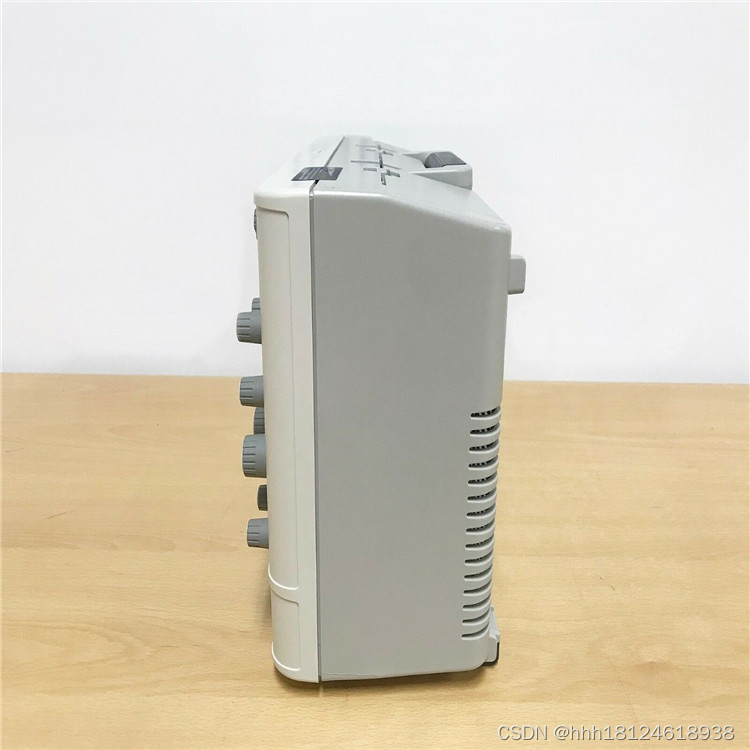

![[实战]Springboot与GB28181摄像头对接。摄像头注册上线(一)](https://img-blog.csdnimg.cn/direct/6dde8fa833f645abaa44d5e9c81bb294.png)







